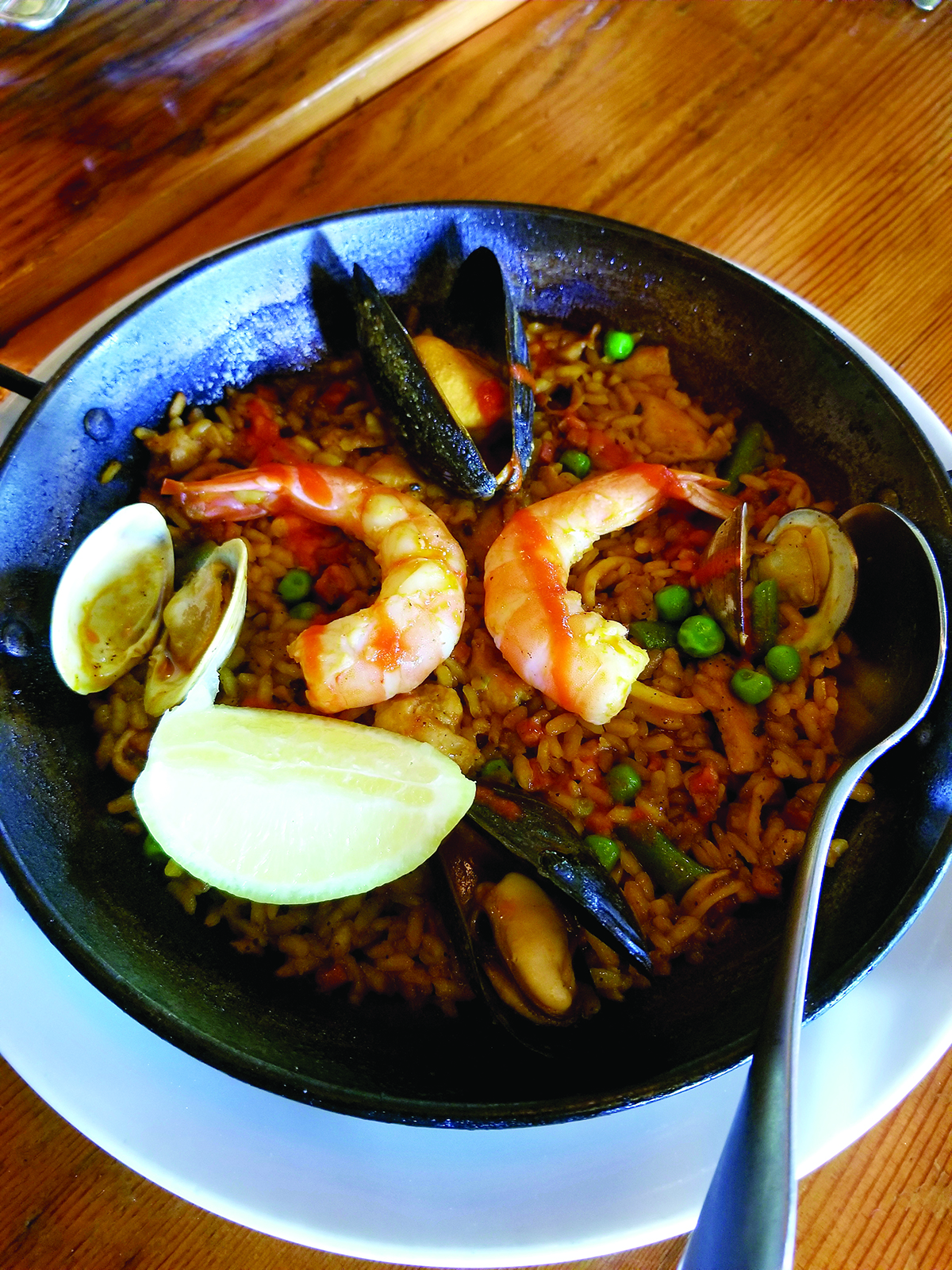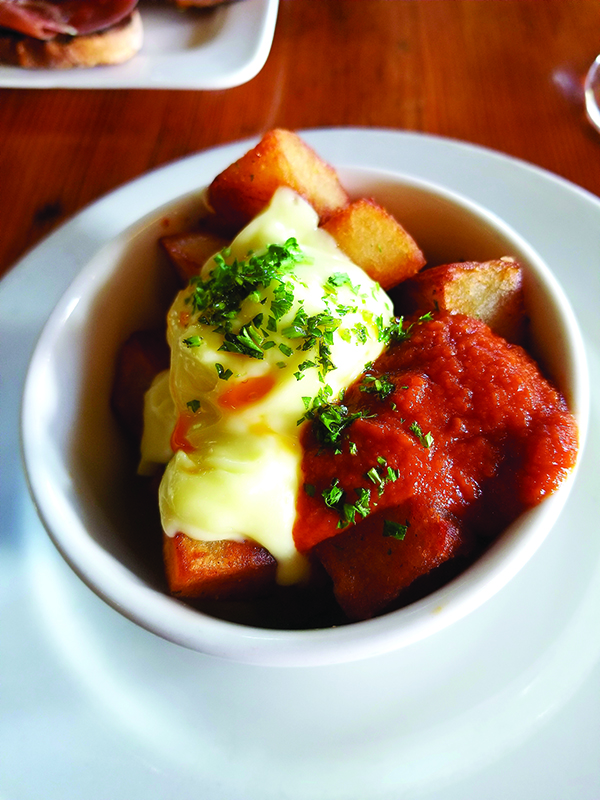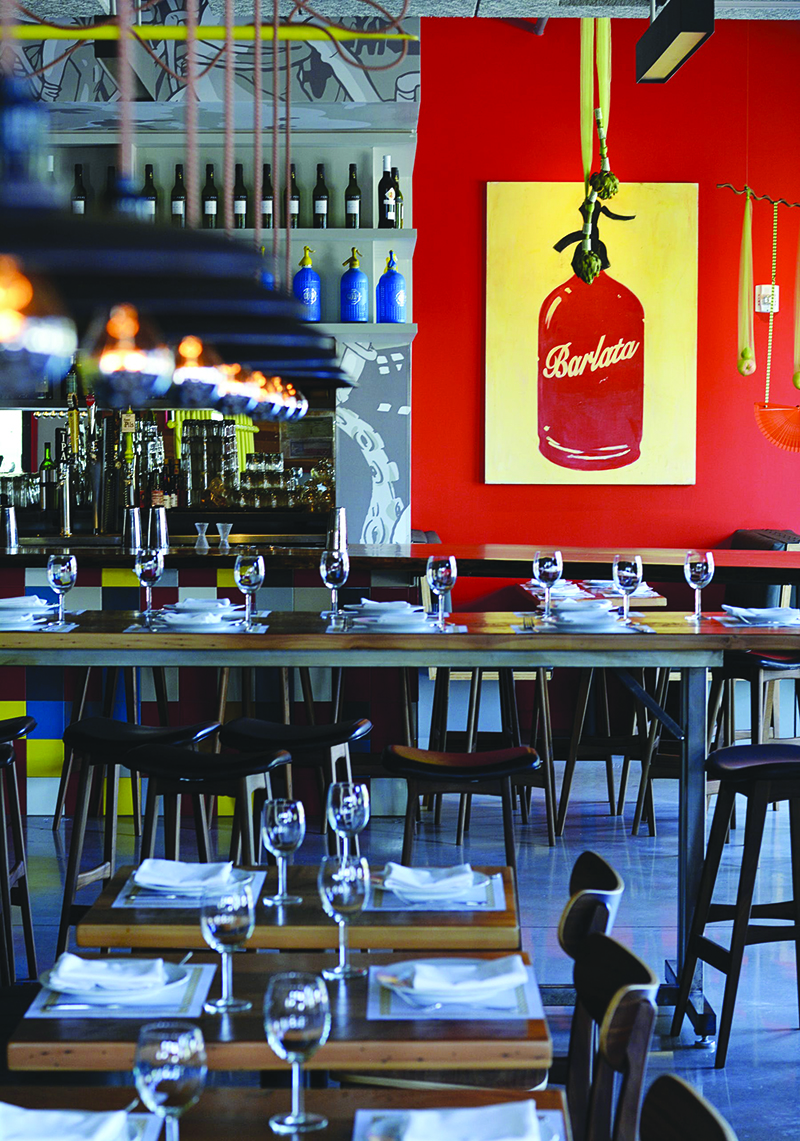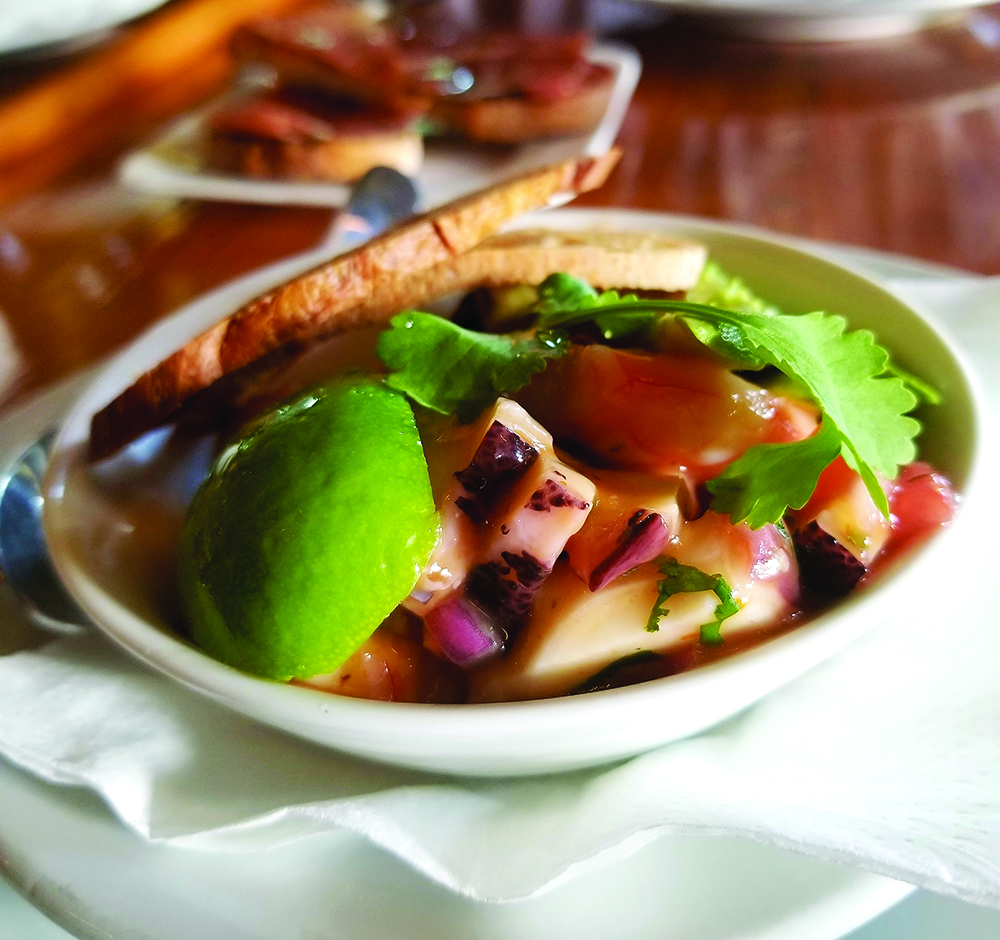 In 2013, before the actual opening of Barlata in South Austin, there had already been a considerable buzz about the impending restaurant.
In 2013, before the actual opening of Barlata in South Austin, there had already been a considerable buzz about the impending restaurant.
Stories abounded on Chef Daniel Olivella’s colorful past and his success in the culinary industry. He was well known to foodies for his ‘B44 Catalan Bistro’ in San Francisco and the original Barlata in Oakland. Closer to home, he taught very popular classes in Spanish (and Catalan) cooking at Central Market.
The funny thing was that, in general, the concept of ‘tapas’ was fairly new to Austin, whereas traditional Mexican and Tex-Mex fare go back as far as the state itself. On more than one occasion, I was quizzed about why I was sharing excitement about a “topless bar” coming to Austin.
In a nutshell, tapas are appetizers – small plates of flavorful meats or grilled vegetables; think shishito peppers, potatoes, Iberico ham, mussels, ceviche, lamb kebabs, etc. with flights of Sherry or Spanish wine.
Eight years later, I’m happy to report that many more Austinites now know and love Spanish tapas and that Barlata is still on South Lamar and thriving.
I had the great pleasure of sitting with Chef Daniel at his restaurant recently, and in a very short time got a strong sense of his love of his culture, his family, and the Spanish food he helped introduce to the US.
 Daniel’s decision to move to Austin had originally been for a better environment for his family. He liked the feel of the city; it felt familiar yet not quite as urban as SF (despite recent growth.)
Daniel’s decision to move to Austin had originally been for a better environment for his family. He liked the feel of the city; it felt familiar yet not quite as urban as SF (despite recent growth.)
The restaurant has been a family enterprise from the beginning. His wife Vanessa Jerez came up with the unique name “Barlata,” which translates as the “can bar,” and he credits a tremendous amount of its success to her business skills. (Their eldest daughter now works at the restaurant as well)
It’s important to note that Daniel is most certainly a hands-on chef and regularly works the line at Barlata. I noticed a particular enthusiasm as he was explaining his method for Sofrito – a Spanish sauce that consists of tomato paste, olive oil, onions, and peppers. He believes that his focus on that base ingredient elevates the many dishes where it gets incorporated.
The ancient Tampa institution, Colombia, and the restaurants of Chef José Andrés notwithstanding, Daniel and I discussed how Spanish food is still relatively unique in the US. Over the last several decades, Mexican, Cuban, and even Central American restaurants have spread to even remote corners of the country. However, Iberian Spanish or Catalonian is still primarily found in larger cities, if at all.
 The popularity of tapas in well-traveled cities like Madrid and Barcelona has undoubtedly started to increase the reputation of Spanish food in general though we are perhaps still a long way from having our own verb for it. (“tapear” (tap-eh-are) is now a verb in Spanish meaning to have tapas.)
The popularity of tapas in well-traveled cities like Madrid and Barcelona has undoubtedly started to increase the reputation of Spanish food in general though we are perhaps still a long way from having our own verb for it. (“tapear” (tap-eh-are) is now a verb in Spanish meaning to have tapas.)
Over the years, I have been to Barlata many times but tend to bring different friends so I can stick to my very favorites on the menu.
Sherry is a very traditional pairing with tapas in Spain, but any of the 65 or so selections on the wine menu would work just fine. In our interview, Daniel mentioned that the wine list is purposely diverse. Rather than focus on Rioja and Ribera del Duero (certainly represented), there are selections from smaller regions like Bierzo, Garraf Massif, Monstant, and even the Canary Islands. If you enjoy sparkling wine, seven good Cavas are available, three by the glass. For something a little stronger, 25 House and Classic cocktails are on the menu, including 6 “Spanish Refrescos.”
 In addition to 29 cold and hot tapas varieties, Barlata offers small and large portions of classic Paella and Arossos (a bit creamier).
In addition to 29 cold and hot tapas varieties, Barlata offers small and large portions of classic Paella and Arossos (a bit creamier).
I usually like to start with an order of grilled shishito peppers – these tend to be mostly mild, with the occasional firecracker sneaking into the mix.
Though many dishes are shareable by two people, I always like getting personal portions of the shrimp and octopus ceviche (bright flavors of lime, red onion, seafood, and cilantro) and patatas bravas (tender cubes of fried potatoes with a sofrito enhanced tomato sauce and garlic aioli).
A favorite that I now make at home is the Catalan classic Pa Amb Tomaquet, ‘tomato bread.’ These are slices of rustic bread grilled over a fire and rubbed with garlic, fresh tomato, and a touch of sea salt. The flavor is incredible, given the simplicity. A great option is to have it topped with Jamon Serrano or the more decadent Jamon Iberico.
Tapas can take their inspiration from many places, and on the menu, you’ll find these beautiful little skewers of Moroccan grilled lamb drizzled with a spicy sofrito pimenton sauce and served with a small side of cucumber salad. (Definitely recommend a personal portion or two)
Depending on your mood, finishing with a Paella for the table is always a great option. Chef Daniel is particular about his style. He believes in a thin but deeply flavorful layer of rice topped with various proteins. The most popular (my favorite) is the Paella Barlata with; chicken, chorizo, shrimp, clams, mussels, peas, and green beans.
If there is room after all of that, the Crema Catalan is the best version of crème brulee – beautiful custard infused with lemon zest and cinnamon, topped with a broiled sugar crust.
An authentic Spanish “tapear” always involves friends and a bit of travel from bar to bar, choosing the best each place has to offer. Though several different tapas bars within walking distance are not likely in the near future, Chef Daniel (and family) have provided the next best thing…. An incomparable assortment under one roof.
On your way out, you’ll see copies of Chef Daniel’s cookbook “Catalan Food” – I highly recommend a copy of that as well.
By Richard Arebalo
OTL Features Editor